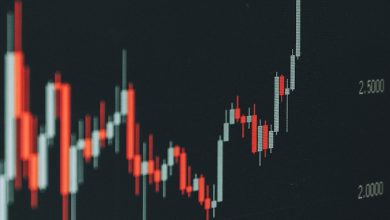What Are Crypto Derivatives and How Do They Work?

- Understanding the Basics of Crypto Derivatives
- Exploring the Various Types of Crypto Derivatives
- The Risks and Benefits of Trading Crypto Derivatives
- How Leverage Works in Crypto Derivatives
- Regulatory Challenges Surrounding Crypto Derivatives
- The Future of Crypto Derivatives and Their Impact on the Market
Understanding the Basics of Crypto Derivatives
Crypto derivatives are financial contracts that derive their value from an underlying asset, such as a cryptocurrency. These derivatives allow traders to speculate on the price movements of cryptocurrencies without actually owning the assets themselves. Understanding the basics of crypto derivatives is essential for anyone looking to get involved in this fast-paced and volatile market.
There are several different types of crypto derivatives, including futures, options, and swaps. Futures contracts allow traders to buy or sell an asset at a specified price on a future date. Options contracts give traders the right, but not the obligation, to buy or sell an asset at a predetermined price before a certain date. Swaps are agreements between two parties to exchange cash flows based on the price movements of an underlying asset.
One of the key benefits of crypto derivatives is that they allow traders to leverage their positions, meaning they can control a larger amount of an asset with a smaller amount of capital. However, this also comes with increased risk, as losses can exceed the initial investment. It’s important for traders to have a solid understanding of risk management strategies when trading crypto derivatives.
Exploring the Various Types of Crypto Derivatives
Cryptocurrency derivatives come in various forms, each serving a different purpose in the market. One common type is futures contracts, where two parties agree to buy or sell an asset at a specified price on a future date. This allows investors to speculate on the price movements of cryptocurrencies without actually owning the underlying assets.
Another popular type of derivative is options, which give the holder the right, but not the obligation, to buy or sell an asset at a predetermined price within a specified timeframe. This provides more flexibility for investors to hedge their positions or take advantage of price fluctuations.
Perpetual swaps are another type of crypto derivative that is similar to futures contracts but with no expiration date. Traders can hold these positions indefinitely as long as they meet the margin requirements. This type of derivative is popular among traders who want to maintain their positions over a longer period.
Crypto indices are another type of derivative that tracks the performance of a specific group of cryptocurrencies. This allows investors to gain exposure to the overall market without having to buy individual coins. It also provides a benchmark for measuring the performance of their investments.
Overall, understanding the various types of crypto derivatives can help investors navigate the complex world of cryptocurrency trading and manage their risk effectively. By diversifying their portfolio with these derivatives, investors can take advantage of different trading strategies and potentially increase their returns in the volatile crypto market.
The Risks and Benefits of Trading Crypto Derivatives
When it comes to trading crypto derivatives, there are both risks and benefits that investors should be aware of before diving in. It’s important to understand that while derivatives can amplify gains, they can also magnify losses. One of the main benefits of trading crypto derivatives is the potential for higher returns compared to spot trading. Derivatives allow traders to speculate on the price movements of cryptocurrencies without actually owning the underlying assets.
On the other hand, trading crypto derivatives also comes with its own set of risks. One of the biggest risks is the volatility of the crypto market. Prices can fluctuate wildly in a short period of time, leading to significant losses if the market moves against your position. Additionally, leverage is commonly used in derivative trading, which can amplify both gains and losses. It’s crucial for traders to have a solid risk management strategy in place to protect their investments.
How Leverage Works in Crypto Derivatives
When it comes to crypto derivatives, one of the key features that traders often utilize is leverage. Leverage allows traders to amplify their exposure to an asset without having to commit the full amount of capital upfront. This means that traders can potentially make larger profits, but it also comes with increased risk.
So, how does leverage work in crypto derivatives? Let’s break it down. When a trader decides to use leverage, they are essentially borrowing funds from the exchange to increase their position size. This borrowed capital acts as a loan, which the trader will need to repay along with any associated fees or interest.
For example, if a trader wants to open a $10,000 position in Bitcoin with 10x leverage, they would only need to put up $1,000 of their own capital. The remaining $9,000 would be borrowed from the exchange. If the price of Bitcoin moves in the trader’s favor, they could potentially see ten times the profit compared to trading without leverage.
However, it’s important to note that leverage works both ways. If the market moves against the trader, their losses will also be magnified. This is why it’s crucial for traders to manage their risk effectively when using leverage in crypto derivatives.
Regulatory Challenges Surrounding Crypto Derivatives
One of the main challenges surrounding crypto derivatives is the lack of clear regulation in many jurisdictions. As cryptocurrencies are a relatively new asset class, regulators are still playing catch-up in terms of creating laws and guidelines specifically for derivatives based on digital assets. This regulatory uncertainty can create a lot of confusion for both investors and platforms offering these products.
Another issue is the potential for market manipulation in the crypto derivatives space. Due to the decentralized and often unregulated nature of cryptocurrency exchanges, there is a risk that bad actors could manipulate prices to profit unfairly from derivatives contracts. This can erode trust in the market and deter institutional investors from entering the space.
Furthermore, the complex and highly technical nature of crypto derivatives can make it challenging for regulators to understand and effectively oversee these products. This lack of understanding can lead to delays in the development of appropriate regulations, leaving the market vulnerable to abuse and fraud.
Overall, the regulatory challenges surrounding crypto derivatives highlight the need for clear and comprehensive guidelines to protect investors and ensure the integrity of the market. Until these issues are addressed, the crypto derivatives market may continue to face uncertainty and potential risks for participants.
The Future of Crypto Derivatives and Their Impact on the Market
Crypto derivatives have been rapidly gaining popularity in the market, with more investors looking to diversify their portfolios and hedge against risks. The future of crypto derivatives looks promising, as advancements in technology and increasing regulatory clarity are making these financial instruments more accessible and attractive to a wider range of market participants.
One of the key impacts of crypto derivatives on the market is the potential for increased liquidity and price discovery. By allowing investors to speculate on the future price movements of cryptocurrencies without owning the underlying assets, derivatives can help to smooth out price fluctuations and improve market efficiency.
Furthermore, the introduction of crypto derivatives has the potential to bring more institutional investors into the market. These sophisticated investors often require more complex financial instruments to manage their risk exposure, and the availability of derivatives can make it easier for them to participate in the crypto space.
However, it is essential to note that the increasing popularity of crypto derivatives also raises concerns about market manipulation and systemic risks. As the market for these instruments continues to grow, regulators will need to closely monitor and address these potential issues to ensure the stability and integrity of the market.



